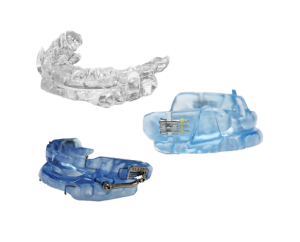 When patients with obstructive sleep apnea cannot tolerate positive airway pressure therapy (e.g., CPAP), they should consider other treatment options, including surgery and oral appliances. My career has focused on the surgical evaluation and treatment of obstructive sleep apnea and snoring. When I started in this field, the main surgical option was traditional uvulopalatopharyngoplasty, and I have been fortunate to contribute to many of the advances in the field over the past two decades. In particular, my research has focused on the basic question of how we choose from among these options, including selecting surgical procedures with awake office examination and drug-induced sleep endoscopy performed in the operating room.
When patients with obstructive sleep apnea cannot tolerate positive airway pressure therapy (e.g., CPAP), they should consider other treatment options, including surgery and oral appliances. My career has focused on the surgical evaluation and treatment of obstructive sleep apnea and snoring. When I started in this field, the main surgical option was traditional uvulopalatopharyngoplasty, and I have been fortunate to contribute to many of the advances in the field over the past two decades. In particular, my research has focused on the basic question of how we choose from among these options, including selecting surgical procedures with awake office examination and drug-induced sleep endoscopy performed in the operating room.
While sleep surgery is far from perfect, there has been less attention directed towards understanding whether a specific patient will benefit from an oral appliance (also known as mandibular repositioning appliance or mandibular advancement device). There are a few unknowns when starting someone on an oral appliance:
- What type of oral appliance will be best for them?
- Will a patient be able to sleep comfortably with the oral appliance, and how far will they tolerate their lower jaw (mandible) being repositioned forward?
- Will they experience side effects (TMJ issues or related problems, tooth movements that change their bite/dental occlusion, or tooth pain)?
- If they do sleep comfortably with the appliance in place, will the oral appliance successfully treat their sleep apnea?
In my mind, the last question listed is key, in that it makes no sense to pursue an oral appliance, going through what may be a couple of months of adjustments (and costs) for a treatment that never has a real chance of helping. (By the way, I take the same approach when counseling someone about surgery, in that you would never subject someone to risks, pain, and costs of surgery if they did not have a good chance of achieving substantial benefit.)
Peter Cistulli, MD is one of the world’s experts in the treatment of obstructive sleep apnea with oral appliances, and he has performed many high-quality studies in this area. A study recently accepted for publication in the medical journal SLEEP examined this critical question. Using magnetic resonance imaging (MRI), they showed that responders to oral appliance had greater opening of their entire airway during wakefulness. This opening needed to occur not only in the Tongue Region but also – and especially – in the Palate Region.
Does this match our experience? Yes!
This is exactly the approach that we have taken for my entire career. In the office, I ask patients to protrude their lower jaw to make sure they have the ability to do so and then also evaluate the opening of the space for breathing while they protrude their mandible during fiberoptic examination. We do something very similar during drug-induced sleep endoscopy, lifting the mandible forward during this examination under sedation. On a previous blog post, I have written previously about a small study examining advancing the mandible during drug-induced sleep endoscopy. In all cases, we look carefully to see how the airway opens in both the Palate Region and Tongue Region. It is well-known that patients vary widely in the extent to which the airway opens, and we have assumed that this was a key factor in the response to an oral appliance.
As has been the case many times, we are indebted to Dr. Cistulli and his team for providing the necessary scientific evaluation of this approach. Using the examinations has always seemed logical, but now we can rely on this thorough, careful work that confirms our gut instincts.
So what do I do if my throat does not open with sticking my lower jaw forward?
We do not just give up! There are a few options. If a patient is able to tolerate an oral appliance, a common approach is add surgery (often soft palate surgery) with an oral appliance. Successful treatment with surgery and oral appliances depends on understanding the physical blockage of breathing. The results is that we can use the benefits of an oral appliance to open at least part of the breathing pathway and then add surgery to achieve full benefit.




karen edson says:
I started wearing my “Silent nite” sleep apnea device in 2015.
It did help with my snoring, but not perfectly. A few years ago my dentist noticed my bite had changed, my front teeth were hitting each other as I bite, and my back teeth do not touch. I was not told before I had the device that this could happen. Is there anything other than 2 yrs of braces that can help? I am 76 years old and healthy at this time.
Thank You,
Karen Edson
Dr. Kezirian says:
These devices often do not have warning labels, unfortunately. To correct this, you would need to speak with your dentist and/or your orthodontist.